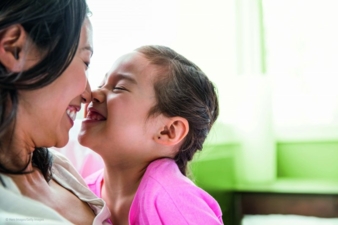26/01/2018 – Oeko-Tex — auf Deutsch lesen
From zero to Made in Green
If a company already offers Standard 100 certified textiles, then the Made in Green label for sustainable textiles is already within reach.
The interim step between them is Step - the Oeko-Tex certification in accordance with “sustainable textile production”:
Since spring 2015, the Oeko-Tex Association has offered a label to all types of sustainably produced textile products with Made in Green. Items with this relatively new label are certified according to STANDARD 100 by Oeko-Tex and also come from production facilities that work and trade in an environmentally friendly and socially responsible manner as per the demands of the Step by Oeko-Tex certification.
The second half of the Made in Green label, the Step certification, is possible for all processing stages throughout the textile supply chain. It is a certification system for brands, retail companies and manufacturers who wish to communicate their achievements regarding sustainable production conditions in a transparent, credible and clear manner. Step analyses relevant areas of the company such as chemical management, environmental performance, environmental management, social responsibility, quality management and occupational health and safety.
The next steps to the Made in Green label
If the company decides to apply for the sustainability label, it can invite suppliers and graphically map and link the whole supply chain after successfully registering in the MyStep database.
In the Made in Green dashboard, the products to be labelled are disassembled into individual components, updated and assigned to the relevant manufacturer. This is how separate products get their own individual supply chain and corresponding ID: The suppliers are notified via the system and must confirm component production. Finally, the company can issue the Made in Green label for individual products and label their sale items.
If companies or suppliers have questions about the process, they can contact the responsible Oeko-Tex institute, which supports all participants with advice and assistance.
What are the advantages of Made in Green?
The Made in Green label attracts all target groups that consider sustainability and transparency important deciding factors when purchasing textiles. The label, for example, in the form of a hang tag, offers information on the global production sites of the labelled item via a test number and QR code and contains a statement about the meaning and aims of Made in Green. Furthermore, manufacturers, brands and individual retailers can advertise with Made in Green at the point of sale, in online shops, brochures and catalogues.
Made in Green - interim summary
Almost half a year after introducing Made in Green, over 153 suppliers from 28 continents have undergone Step certification. At the end of 2017, numerous items in trade from the most varied product lines in the textile industry (including yoga mats) have been labelled with Made in Green. One of the forerunners of Made in Green is the famous Swiss underwear brand Calida: Since July 2016, the children’s collection by this premium brand has been the first fully labelled line on the market.
Read more in our printed issue textile network 1 2 2018 (appears 25th January 2018)




